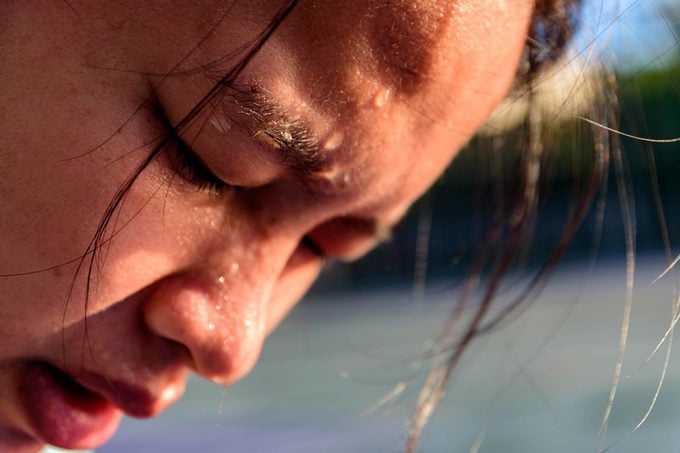What’s the Difference Between Heat Exhaustion and Heat Stroke?
Updated: Mar. 28, 2022
Both are forms of heat illness that you want to avoid. Here are the symptoms to look for that them apart and what to do about treatment.
Summer means outdoor fun, ice cream, long days followed by warm nights, and the chance to stock up on some must-have vitamin D. However, it also means taking extra care to look after yourself and your family in the higher temperatures. When the body gets too hot, heat exhaustion can occur—and if that’s not treated it can lead to something much more serious: heat stroke.
“When we discuss heat stroke and heat exhaustion, we are talking about two different problems that exist on a spectrum of heat illness, with heat stroke being a more severe form of heat illness,” explains Neha Raukar, MD, associate professor in Emergency Medicine at Brown University.
What are the symptoms of heat exhaustion?
Heat exhaustion is on the less severe end of the spectrum of heat illness, according to Dr. Raukar. “It occurs in high-temperature environments, and intervention is required, even if that intervention is just taking a break, so the disease does not progress to heat stroke, which can be fatal,” Dr. Raukar says.
According to family physician and assistant professor at Rowan University School of Osteopathic Medicine Jennifer Caudle, DO, the symptoms of heat exhaustion vary but can include muscle cramps, heavy sweating, fatigue or weakness, fast heart rate, nausea or vomiting, and pale or cool skin. “Some of the signs of heatstroke can overlap with heat exhaustion,” says Dr. Caudle. Here are some other signs you’ve gotten too much sun.
What are the symptoms of heat stroke?
The difference with heat stroke is that you also have a core body temperature of 104 degrees F (or higher) and there is dysfunction of the central nervous system that can lead to fainting/unconsciousness or seizures, according to Dr. Caudle. In addition to a high core body temperature, typical symptoms of heat stroke include dizziness, vomiting, confusion or disorientation, and unusual behavior, such as aggression. Keep an eye out for these signs that your body is overheating.

How should I treat heat exhaustion and heat stroke?
While heat exhaustion doesn’t normally require medical attention, it’s important to treat the symptoms immediately. This involves moving to a cooler location, sipping water, and applying cool, wet cloths to as much of the body as possible. When it comes to heat stroke, however, Dr. Raukar advises calling 911 immediately for appropriate medical attention. “Current treatment methods include cooling blankets, cold-water immersion, application of ice packs, and evaporative cooling with fans and misting,” she says.
Since heat exhaustion and heat stroke exist on the same spectrum of illness, Dr. Raukar’s recommendations for avoiding them are the same: Avoid strenuous activity in hot temperatures (such as exercising, mowing the lawn, or playing sports), wear loose, light clothing, seek out shade or air conditioning if you think you are getting overheated, and sip water or cool fluids to help keep the body cool. And don’t forget sunscreen! Check out our guide to the top dermatologist-recommended sunscreens.

















